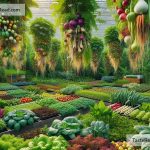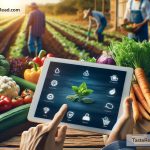Exploring the Role of Hydroponics in Sustainable Ingredient Sourcing
Imagine growing plants without soil, using less water, and getting more produce in a smaller space. This might sound like a scene from a futuristic novel, but it’s a real practice known as hydroponics. Hydroponics is revolutionizing the way we think about farming and has a big role in the quest for sustainable ingredient sourcing. Let’s dive into this fascinating world and see how it’s changing the game for the better.
Hydro-what? Understanding Hydroponics
Hydroponics is a method of growing plants without soil. Instead, plants are grown in a water-based solution that’s rich in nutrients. This technique allows plants to grow faster and healthier since they get exactly what they need, right when they need it. Plus, because there’s no soil, there are usually fewer pests and diseases, which means less need for harmful pesticides.
Why Does Hydroponics Matter for Sustainability?
The world is facing some serious challenges: population growth, climate change, water scarcity, and the loss of arable land. Traditional agriculture methods are struggling to keep up. That’s where hydroponics comes in, offering a sustainable alternative that tackles these issues head-on.
-
Uses Less Water: Hydroponic systems use up to 90% less water than traditional farming. Since the water is recirculated in the system, less is wasted. This is particularly important in areas facing water scarcity.
-
Requires Less Space and Soil: Hydroponics can be set up anywhere, from urban rooftops to unused warehouses, making it possible to grow food close to where it’s consumed. This reduces the carbon footprint associated with transporting food and helps alleviate the pressure on arable land.
-
Yields More Food Faster: Plants in hydroponic systems grow up to 50% faster and produce higher yields. This efficiency means we can grow more food in smaller spaces, an essential factor as urban populations continue to rise.
-
Reduces the Use of Chemicals: Since hydroponic systems are often enclosed and soil-free, there’s less chance for pests and diseases to attack the plants. This leads to a reduced need for pesticides and herbicides, making for healthier, cleaner produce.
Sustainable Ingredient Sourcing: A Hydroponic Revolution
In the culinary world, there’s a growing demand for fresh, local, and sustainably sourced ingredients. Hydroponics is answering that call by providing a way to grow ingredients all year round, regardless of the climate. Chefs and food companies are increasingly partnering with hydroponic farms to source high-quality, sustainable produce.
Take a restaurant in the heart of a bustling city, for example. They can source fresh lettuce, herbs, and tomatoes from a hydroponic farm just a few blocks away. This not only supports local businesses but also drastically cuts down on the emissions associated with transporting food long distances.
Challenges and Future Directions
While hydroponics offers many benefits, it’s not without its challenges. Initial setup costs can be high, and there’s a learning curve when it comes to managing the systems. Additionally, hydroponics requires energy, often from electricity, to pump water and provide artificial light, which can raise questions about its overall carbon footprint.
However, as technology advances and becomes more affordable, these challenges are gradually being addressed. Renewable energy sources, such as solar power, are increasingly being integrated into hydroponic systems to reduce their environmental impact.
The Future is Green (and Water-Filled)
Hydroponics is a shining example of how innovation can lead us toward a more sustainable future. By making smart use of technology, we can produce food more efficiently and sustainably, reducing our impact on the planet while addressing some of its most pressing challenges.
As this method of farming continues to evolve, we can expect to see it play an increasingly important role in sustainable ingredient sourcing. It’s not just about growing plants without soil; it’s about rethinking how we produce food to ensure a healthier planet for generations to come.
So, next time you enjoy a crisp salad or a fresh tomato, consider the remarkable journey it might have taken. From a water-filled tray in a city building straight to your plate, hydroponics is helping make sustainable food sourcing not just a dream, but a delicious reality.


